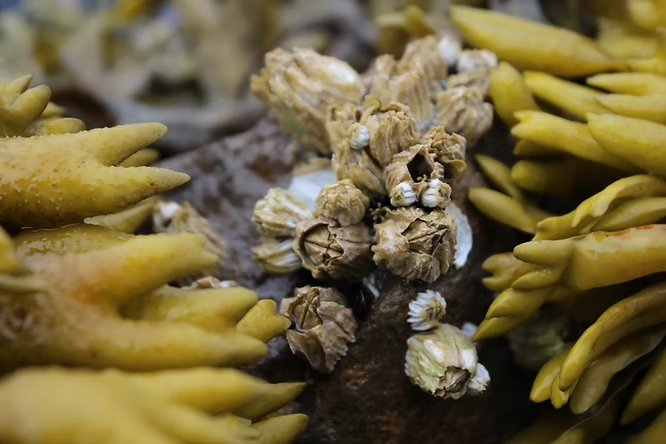Introduction
Barnacles, though surprising to many, are crustaceans closely related to crabs, lobsters, and krill. Unlike their mobile relatives, adult barnacles are sessile and permanently attach to hard surfaces after a brief larval phase. Among them, the acorn barnacle is a notable species that lacks a stalk and cements its shell directly onto rocks, docks, or other substrates. In contrast, gooseneck barnacles represent the stalked variety.
Habitat and Adaptations
Acorn barnacles are common along rocky shores of the North Atlantic and North Pacific Oceans. Once settled, they encase themselves in a protective shell that shields them from predators and environmental stress. Living in the intertidal zone means enduring long stretches of exposure to air during low tides. To survive, acorn barnacles can tightly close their shells, sealing in moisture until the tide returns.
When submerged, barnacles extend their feathery, modified legs to filter plankton and organic particles from the surrounding water. This feeding strategy helps sustain dense colonies that often blanket rocks in coastal environments.
Reproductive Biology
Acorn barnacles display a fascinating reproductive system. Although hermaphroditic—possessing both male and female reproductive organs—they cannot self-fertilize and must rely on nearby neighbors for reproduction. Unlike many crustaceans, fertilization is internal.
To overcome immobility, acorn barnacles possess the longest penis relative to body size in the animal kingdom. While an adult barnacle measures less than half an inch (1.25 cm), its penis may extend up to three inches (7.5 cm), about six times its body length. This remarkable adaptation allows individuals to exchange sperm with nearby neighbors. However, barnacles isolated more than three inches away from others cannot reproduce successfully. At the end of each mating season, the penis dissolves and regenerates the following year, a cycle unique among crustaceans.
Human Interaction and Conservation
Acorn barnacles are not commercially exploited and face no major threats from human activities. Nonetheless, their intertidal habitat makes them vulnerable to trampling by visitors exploring rocky shores at low tide. Careful observation and responsible behavior help protect these small yet ecologically important animals.
Conclusion
Though small and seemingly unremarkable at first glance, acorn barnacles showcase incredible adaptations for survival in the challenging intertidal zone. Their strong shells, efficient filter feeding, and extraordinary reproductive strategy highlight the complexity of life in coastal ecosystems. As resilient as they are, these barnacles remind us of the delicate balance that defines rocky shore communities.

